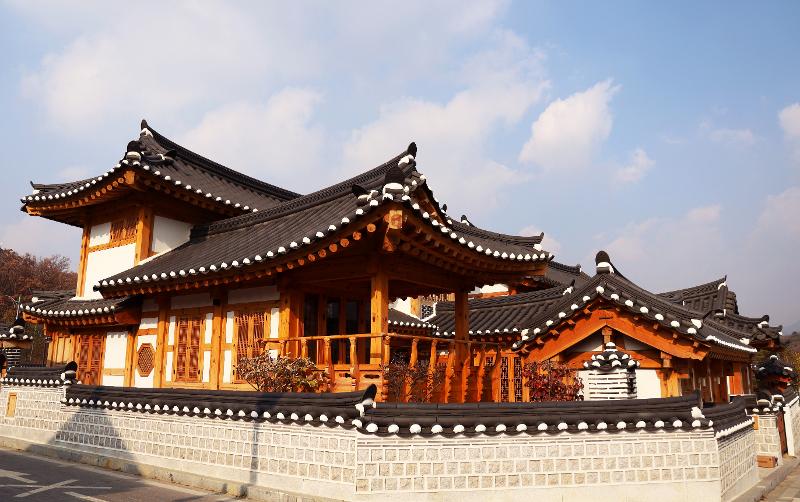
Illuwayou, a multicultural Hanok space in Seoul's Eunpyeong Hanok Village, on Nov. 1 won the grand prize in the completed construction category in this year's National Hanok Competition held by the Ministry of Land, Infrastructure and Transport. (Li Song)
By Xu Aiying and Lee Jihae
Seoul | Nov. 13, 2020
For foreign visitors in Korea more accustomed to Western-style housing, spending a day at a Hanok (traditional home) might help them better understand the country's traditional architecture.
A Korea.net reporter on Nov. 13 got off at Yeonsinnae Station on Lines 6 and 3 of the Seoul subway system and took a bus to the entrance of Jinkwansa Temple. There, a wide view of Eunpyeong Hanok Village, with a phalanx of traditional homes, was eye catching. Unlike the Hanok villages of Bukchon and Seochon, both of which bustle with tourists, this one was quiet and peaceful.
Of the many Hanok buildings in this village, the multicultural space dubbed "Illuwayou dallboro" has both lodging facilities and venues for performing arts and exhibitions. The space on Nov. 1 won the grand prize in the completed construction category of the National Hanok Competition held by the Ministry of Land, Infrastructure and Transport.
The building consists of a basement and two floors above ground with a toenmaru, or a narrow wooden porch running along the outside of a room. It has the classic Hanok structure of a gate, yard, toenmaru and daecheong (a hall with two rooms). The back featured functional spaces like a boiler room, stairs, a bathroom and storage.
Lifting the foldable door between the hall and the room connects the yard, hall and room to form one large space -- a rare a characteristic that differentiates the building from other Hanok structures. One can lift the door to watch a performance or event in the yard or see inside the room from the yard.
The ministry explained in the assessment portion of the competition that Illuwayou can expand the yard to the Hanok interior to host cultural events for area residents, adding, "It expresses well the fundamental value of the multipurpose Hanok yard."
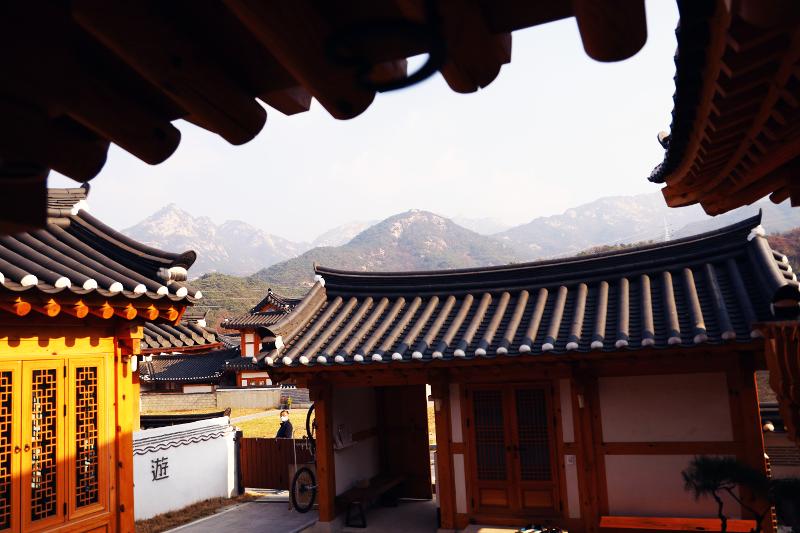
Illuwayou is open toward the direction of Bukhansan Mountain, so visitors can see the mountain's ridges from various parts of the building. (Li Song)
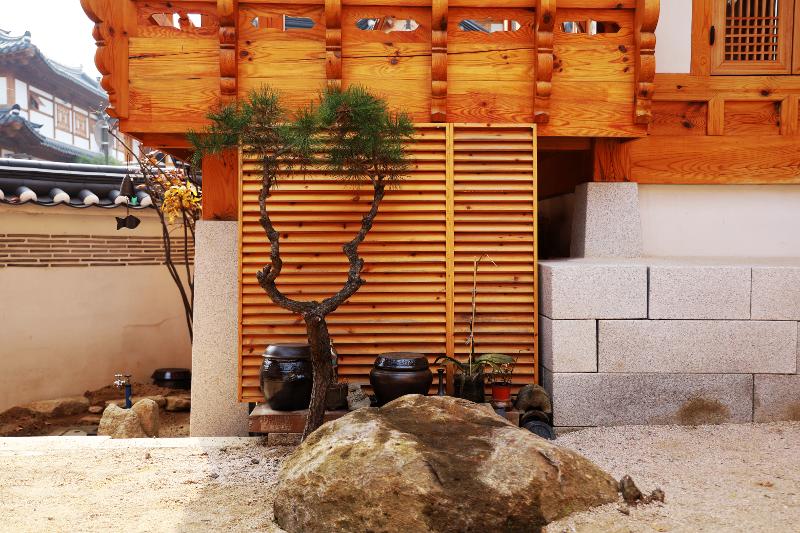
Illuwayou is more than just a space. Visitors here can appreciate nature and take rest. (Li Song)
Another charm here is the feeling of harmony with the surrounding nature. Illuwayou is open toward the direction of Bukhansan Mountain, thus the mountain's ridges are visible from any part of the building. The frame is made of pine trees, the floor is covered in red clay, and sunlight and moonlight gently enter through the windows made of Hanji (traditional paper).
To the west of the town is Jingwangeunlin Park. The walking trail of Bukhansan nearby is also great for a light walk. Illuwayou director John Cho said he asked the designer to follow the Hanok architectural style and include the mountain's charm to make guests feel comfortable.
"Illu wa you dall boro" means "Come here to see the moon" in the dialect of the Chungcheong-do region. The name has another meaning through the traditional Chinese characters (hanja) for the name, which mean "to lie down at the finest balcony and enjoy the scenery."
Cho said, "We named it so because we hope that this place becomes a resting place where modern people can lie down on the finest balcony and enjoy the scenery and the moon."
Visitors can enjoy nature, take a break from everyday thoughts and see cultural events at Illuwayou, not to mention enjoy a clear and bright view of Bukhansan in fall.
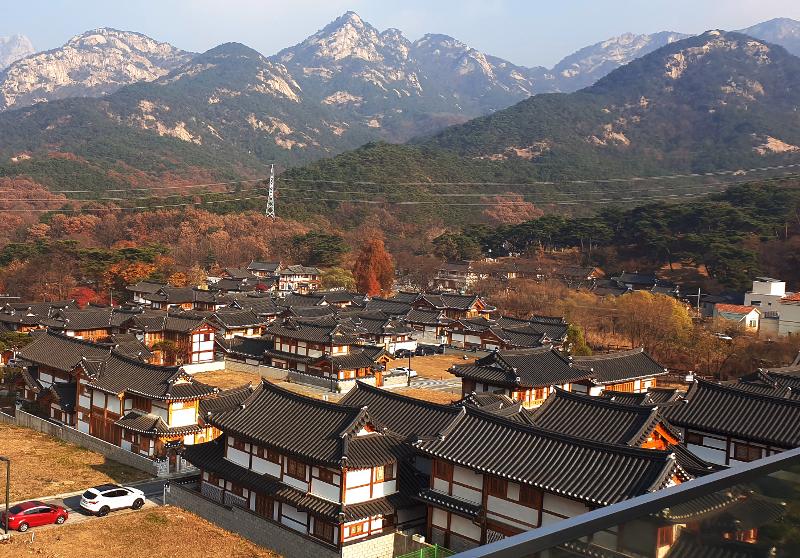
This panoramic view of Eunpyeong Hanok Village in Seoul is from the foot of Bukhansan Mountain. (Xu Aiying)
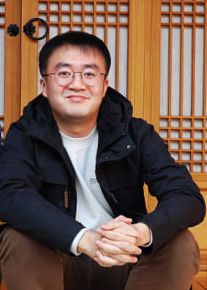
Li Song visited Eunpyeong Hanok Village in Seoul to report on Illuwayou, which won the grand prize for completed construction category in this year's National Hanok Competition.
He said he was moved by the building's director John Cho, who tries to promote Korean culture to the world through traditional Hanok buildings rather than duty-free shopping targeting foreign visitors.
Li said a people's traditions can last forever if they overcome discrimination against nationality, ethnicity or skin color and are accepted by people worldwide. K-pop is globally thriving, he added, because traditional Korean culture is serving as a solid cornerstone.
He recommended visiting the village and seeing the view of Bukhansan Mountain.
xuaiy@korea.kr